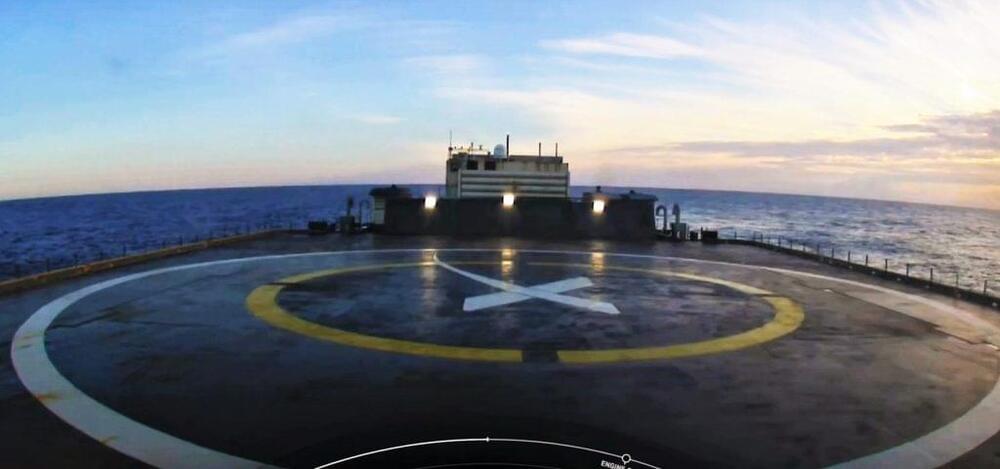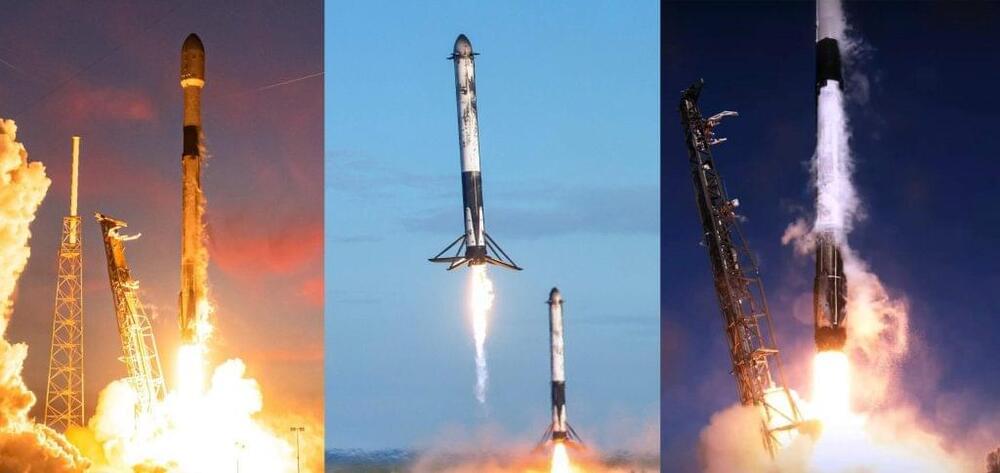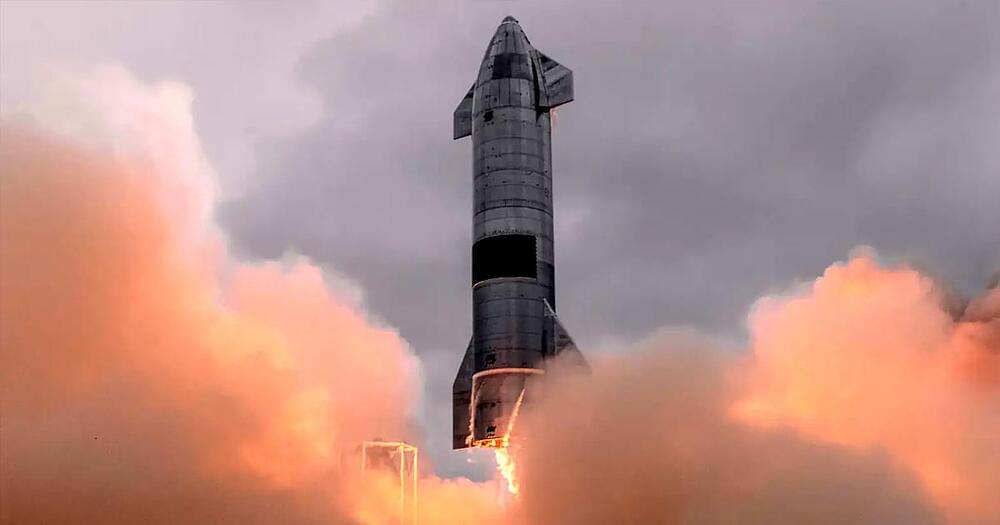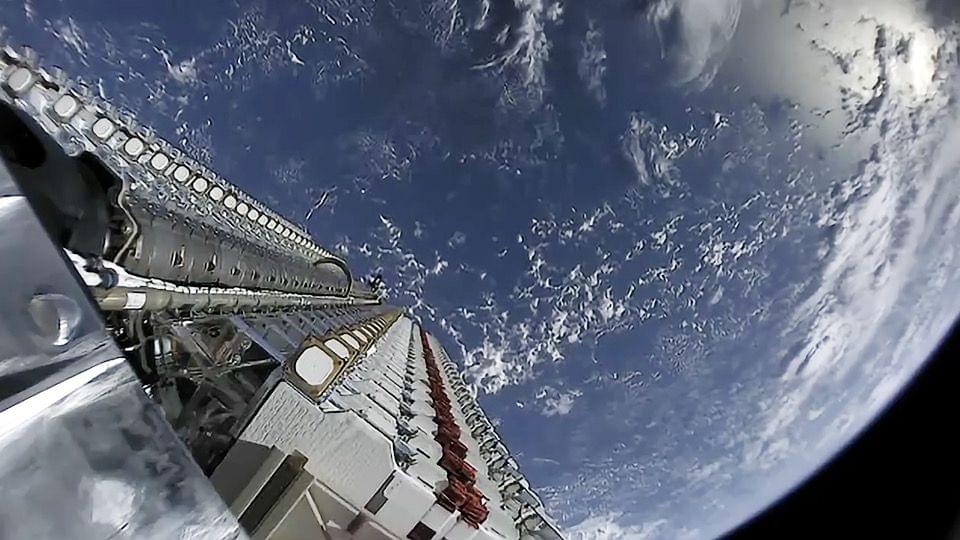
Category: satellites – Page 90


SpaceX drone ship leaves port for sixth back-to-back Starlink launch
SpaceX drone ship Just Read The Instructions (JRTI) has departed Port Canaveral in anticipation of the company’s sixth consecutive Starlink launch.
Known as Starlink 4–12, the mission will be SpaceX’s sixth uninterrupted Starlink launch – just shy of the company’s record of seven Starlink launches between commercial payloads. Though SpaceX would probably prefer to avoid month-long streaks without commercial launches, the company’s ability to use its own launch capabilities to deploy its Starlink constellation means that it can maintain valuable economies of scale while simultaneously launching satellites that generate some revenue.
With approximately 200,000 active subscribers, Starlink should already be generating around ~$250 million in annual revenue – perhaps enough to pay for anywhere from five to ten Starlink launches. Viewed another way, $250M would also pay the average annual salaries of more than 2,300 employees. Even if it doesn’t come close to the $1–2 billion SpaceX is likely spending annually on Starlink development, deployment, and operations, it’s still better than the alternative that all other launch providers are left with: nothing.

SpaceX rapidly reuses converted Falcon Heavy booster
SpaceX has reflown a converted Falcon Heavy side booster just 37 days after its first mission as a Falcon 9 rocket, successfully delivering a batch of Starlink satellites to low Earth orbit (LEO) in the process.
Booster B1052 first flew in April 2019 as part of Falcon Heavy Block 5’s launch debut. The same side core was reused two and a half months later in June 2019 but was then unceremoniously ushered into an unknown warehouse. Despite earlier statements from CEO Elon Musk indicating that new Block 5 Falcon Heavy side boosters could be quickly and easily converted into Falcon 9 boosters, B1052 remained mothballed in storage for the better part of two and a half years. Only in December 2021 – almost 30 months after its last launch – did the former Falcon Heavy side core finally reappear in the form of a Falcon 9 booster.
A month and a half later, on January 31st, Falcon 9 B1052 debuted with the flawless launch of Italy’s CSG-2 Earth observation satellite, subsequently becoming the first SpaceX booster of any kind to complete three back-to-back ‘return-to-launch-site’ landings.

DoD space agency funds development of laser terminal that connects to multiple satellite at once
The Space Development Agency awarded BridgeComm and Space Micro a $1.7 million contract to demonstrate point-to-multipoint communications.
WASHINGTON — Each of the satellites in the Pentagon’s planned mesh network of communications satellites could have as many as many as four laser links so they can talk to other satellites, airplanes, ships and ground stations.
Optical inter-satellite links are critical to the success of the Space Development Agency’s low Earth orbit constellation — known as Transport Layer — that will be used to route data traffic. Lasers provide much higher transmission data rates than traditional radio-frequency communications but are also far more expensive.
How big is the moon really and how did we measure it?
The struggle to measure the moon is a longstanding one.
Earth’s moon is the largest and brightest object in the night sky by far, so it has always been a subject of human fascination and even worship, but how big is the moon really?
As a natural satellite of Earth, the moon is clearly the smaller of the two, but how much smaller is it? How much of the Earth would the moon cover if it sat on Earth’s surface? And how does our moon compare to the moons of other planets in the solar system? ## How big is the moon compared to Earth?
The moon, like the Earth, isn’t a perfect sphere, so we measure its size by its mean radius, which is 1,079.6 miles (about 1,737.4 kilometers), with a mean diameter of 2,159.2 miles (about 3,475 kilometers), and an equatorial circumference of 6,783.33 miles (about 10,917 kilometers).
The mean radius of the Earth is 3,958.75 miles (about 6,371), with Earth’s diameter measuring about 7,917.5 miles (about 12,742 kilometers), giving an equatorial circumference of 24,901.45 miles (about 40,075 kilometers).
Full Story:

Elon Musk Says SpaceX Is So Busy With Ukraine That It’ll Delay Starship
Welp, Starship is delayed yet again.
SpaceX CEO Elon Musk tweeted on Friday that there would be “slight delays” ahead for the company’s experimental Mars-bound spacecraft. To blame, the billionaire said, was SpaceX having to dedicated more resources to fighting escalating cyber attacks on Starlink satellites by Russia after the space company sent Ukraine a shipment of its internet terminals.
Starship’s first launch has been delayed numerous times now, with much of it due to pending regulatory approval from the Federal Aviation Administration (FAA). However, this latest instance comes amidst a time of geopolitical turmoil caused by Russia’s invasion of Ukraine.

Launch Schedule
As I suspected, SpaceX is now doing well with building laser satellites and is rushing to launch them so, among other things, they can service East Ukraine.
They are launching Starlink satellites from SLC-40, Cape Canaveral SFS (Space Force Station) on March 8th, only 15 days after they launched Starlink satellites from the same tower. At this rate, with their 3 towers, they can do more than 1 launch/week on average.
Last year, SpaceX did 31 orbital launches. This year they will do closer to 62. The last Starlink launch was March 3rd from LC-39A Kennedy Space Center.
Live coverage and the most up-to-date schedule of all upcoming orbital rocket launches, including SpaceX, ULA, Arianespace and others. Check back for live coverage on launch day!

Elon Musk says SpaceX focusing on cyber defense after Starlink signals jammed near Ukraine conflict areas
Musk and SpaceX sent Starlink terminals to Ukraine at the request of a government official after internet service was disrupted across the country by the Russian invasion. A shipment of Starlink ground terminals, which use an antenna and terminal to access the satellite broadband service, arrived in Ukraine by Monday Feb. 28). With the terminals in use, SpaceX is working to keep them online, Musk said.
“Some Starlink terminals near conflict areas were being jammed for several hours at a time,” Musk wrote in a Twitter statement Friday (March 1). “Our latest software update bypasses the jamming.”
I wonder how many of the satellites are damaged?
Starship and Starlink V2 progress will be delayed, Musk said.
US Military Announces Plans for Satellite Orbiting the Moon
The US military is looking to have spy satellites patrol the Moon’s orbit, according to a recently shared video first spotted by Ars Technica.
The two-minute video, titled “Cislunar Highway Patrol System (CHPS)” and uploaded by the US Air Force Research Lab (AFRL) this week, details the project.
“Until now, the United States space mission extended 22,000 miles above Earth,” a narrator explains in the brief video. “That was then, this is now.”
Russia could take Ukraine war to space
CNBC’s Morgan Brennan joins The News with Shepard Smith to report that Russia is refusing to deliver satellites to space without guarantees they won’t be used against Moscow in its war against Ukraine.